Developing Course Subsections
Sections are divided into subsections, which in turn contain one or more units. A subsection may represent a topic in your course or another organizing principle. Subsections are sometimes called “lessons” or they might represent a week’s worth of material.
Learners cannot see any content in a subsection until you schedule a release date, and that release date has passed.
If a subsection’s release date has passed, learners can see content in the subsection if the following conditions are met.
- The release date of the parent section has passed.
- The units have been published.
- The subsection or the units are not hidden from learners.
To control whether learners have access to the subsection and its units after a subsection’s release date, you can apply various visibility settings.
By default, the subsection and its units are available to learners, except for any units that you have explicitly hidden from learners.
You can also choose to entirely hide a subsection so that the subsection and its units are not visible to learners at all in the course navigation, or you can hide the contents of a subsection after the subsection’s due date has passed.
To create a new subsection, follow these steps.
- In the outline, expand the section in which you want to create a new subsection.
- Select New Subsection. A new subsection appears at the end of the section, with the subsection name selected.
- Enter the name for the new subsection. A descriptive name can help learners locate content in the course. It can also help you select content when you analyze performance in edX Insights.
- Add units to the new subsection as needed.
It is recommended that you test course content as you create new subsections.
To change a subsection name, click the Edit icon next to the subsection name. The name field becomes editable. Enter the new name, and then click outside of the field to save the name.
Set a Subsection Release Date
To set the subsection release date, follow these steps.
- Select the Configure icon in the subsection box.

- The subsection settings dialog box opens.
- On the Basic tab, under Release Date and Time, enter the release date and time for the subsection.
- Learners who have specified a time zone in their account settings see course dates and times converted to their specified time zone. Learners who have not specified a time zone in their account settings see course dates and times on their dashboards, in the body of the course, and on their Progress pages in the time zone that their browsers specify. Learners see other course dates and times in UTC.
- Click Save.
Publish All Units in a Subsection
To publish all new and changed units in a subsection, click the Publish icon in the box for the subsection.

Entirely Hide a Subsection from Learners
You can completely hide a subsection and its content from learners, regardless of the status of units within the section. Subsections hidden in this way are not shown in the course navigation and are not included when grades are calculated.
To entirely hide a subsection from learners, follow these steps.
- Select the Configure icon in the subsection box.

- The subsection settings dialog box opens.
- On the Visibility tab, locate Subsection Visibility, and then select Hide entire subsection.
- Click Save.
None of the content in the subsection is visible to learners. In the course outline, the subsection is shown with a lock icon, indicating that it is available only to course staff.
To make the subsection visible to learners, repeat these steps and select Show entire subsection.
Hide a Subsection Based on Date
You can make a subsection’s content unavailable based on the date. For example, you might want to make exam questions unavailable after a certain date. For instructor-led courses, this option uses the subsection’s due date. For self-paced courses, this option uses the course’s end date.
Subsections that are hidden in this way remain visible in the course navigation and are included when grades are calculated. However, learners can no longer access the subsection’s content after the due date or the course end date.
To hide a subsection based on the date, follow these steps.
- Click the Configure icon in the subsection box.
- The subsection settings dialog box opens.
- On the Visibility tab, locate Subsection Visibility, and then select the appropriate option.
- In instructor-led courses, select Hide content after the due date.
- In self-paced courses, select Hide content after the course end date.
- Click Save.
Learners who access the subsection after the due date or course end date has passed are shown a message indicating that the subsection is no longer available because the due date (or course end date) has passed.
In the course outline in Studio, the subsection is shown with an icon, and a “Subsection is hidden after due date” or “Subsection is hidden after course end date” message under the subsection’s display name.
Delete a Subsection
When you delete a subsection, you delete all units within the subsection.
You cannot restore course content after you delete it. To ensure you do not delete content that you might need later, you can move any unused content to a section in your course that you set to never release.
To delete a subsection, follow these steps.
- Click the Delete icon in the subsection that you want to delete

- When the confirmation prompt appears, click Yes, delete this subsection.
